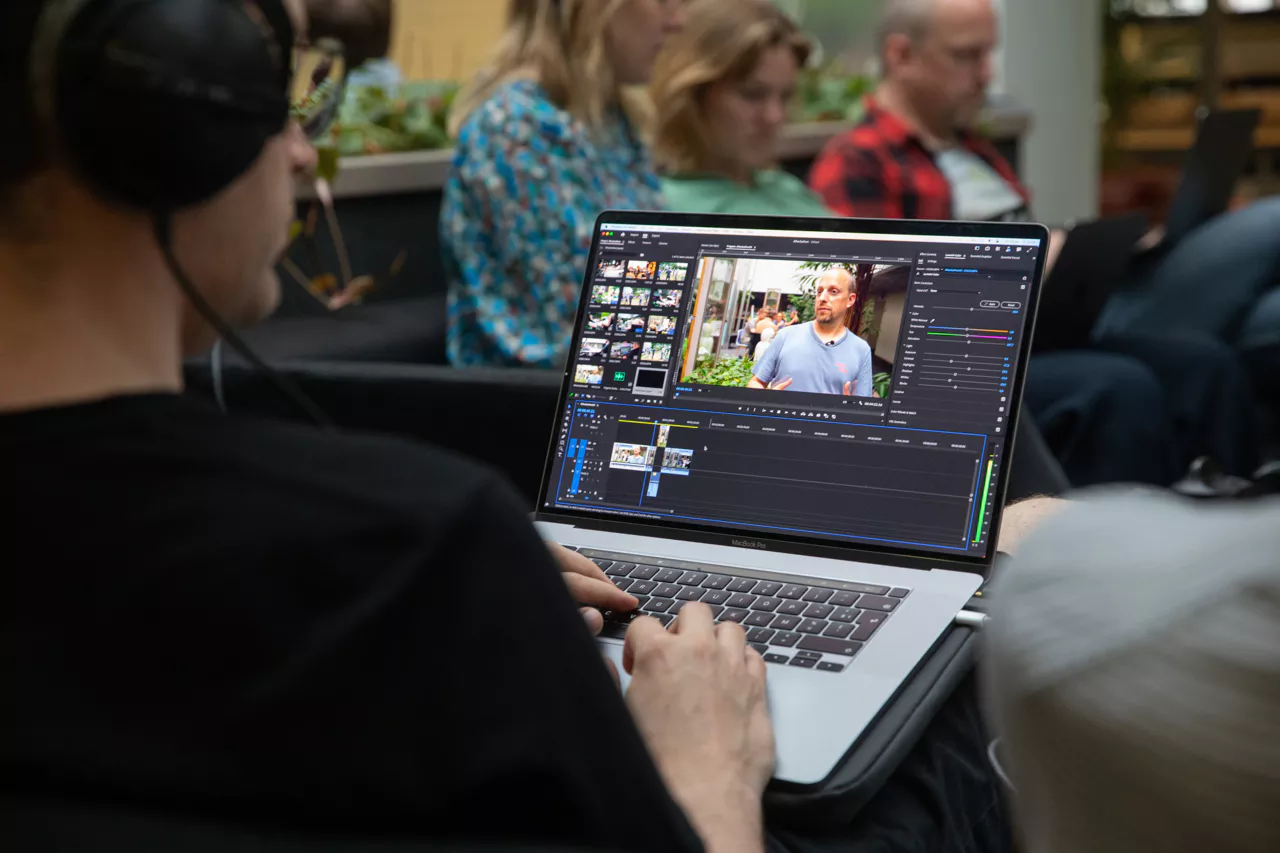
November 09, 2023
AI at VRT: the copilot for media
Artificial intelligence, or AI for short, is an integral part of everyday life. Just think of a personalised news feed on Facebook, or the chatbot that helps you with your online purchase. AI is no longer a buzzword, but an indispensable companion. Not only on a personal level, but also professionally, this technology is transforming the way we work today. At VRT, AI has been playing a role for some time, which is becoming increasingly important for the future. Always with a view to creativity, efficiency and transparency. Read more about how VRT is getting started with AI here.
"Artificial intelligence will only evolve faster in the coming years. In all sectors and in daily life. At VRT, we are embracing this technology today so that, as a public broadcaster, we can keep up and, above all, use AI in the right way. That is why we are working on an AI policy that defines the guidelines and tools at VRT, starting with our public mission. This is how we use AI in the fight against disinformation and an accessible offer for every Fleming." - Tatjana Vandenplas, Technology and Infrastructure
A cockpit for strong content
AI helps media creators work faster and more efficiently, whether it concerns writing texts, editing images and videos, or customising content for a specific channel. Meanwhile, several AI applications exist that can translate, convert speech into text and suggest words that can improve the readability of an article. This frees up more time for creativity.
VRT is taking full advantage of these opportunities. For instance, VRT NWS is working on a prototype that can easily create automatic summaries based on a news article written by a journalist. Here, AI helps to translate original content into derivative, short formats, even in an adapted style. Just think of the social media posts of nws.nws.nws, the youth newsroom. What is important here is that editorial, and especially human, control always happens at the end of the process. AI thus provides support, but does not replace a human's expertise and experience.
In addition to content creation, AI also helps elaborate new stories with existing content. AI can smoothly transcribe a lot of video material, recognise faces and text for custom captions, and also split programmes into chapters. That way, reporters or journalists can quickly find a particular clip and elaborate video montages based on text.

From black box to impact
AI makes it possible to process a lot of data for a specific purpose, from accessibility to disinformation. And from optimisation to personalisation.
AI voices are getting better and better today, meeting different media needs, such as making content accessible to people with visual impairments or better guiding users through an online offer. VRT investigated what the possibilities were with the existing VRT voices. The amount of data of a given voice allows you to train an AI to pronounce all possible words and sounds with it. So with VRT's gigantic audio archive, AI technology can easily get to work cloning voices, based on written-out text. In Flemish, the technology lags a bit behind English, but it is good enough to set up experiments.
For VRT MAX too, we are looking at how we can further use AI to bring our offerings to the audience even more strongly. Today, for instance, as a VRT MAX user, you get targeted recommendations thanks to AI. On the one hand for a better user experience, on the other hand also for 'taste broadening'. For example, AI looks at the content you watched but also did not watch, to suggest innovative things. These taste-broadening algorithms ensure that users also stay stimulated with new content. The translation of those algorithms happens in different ways, such as a push message or an adaptation in a swimlane on VRT MAX.
Finally, AI helps monitor the quality and especially reliability of content. Even though AI itself is spreading disinformation and it is becoming increasingly easy to create fake news with the technology. VRT NWS check editors are trained to recognise and debunk the use of AI in images. Besides that traditional way of fact-checking, they also use AI applications to distinguish what is real and what is fake. VRT also conveys that knowledge to the general public. With EDUbox's interactive teaching packages, for example, young people can learn in a playful way what AI is and what the technology can do. At the same time, they also learn to look critically at the active role AI plays in everyday life. This free lesson pack is tailored to secondary school students.


